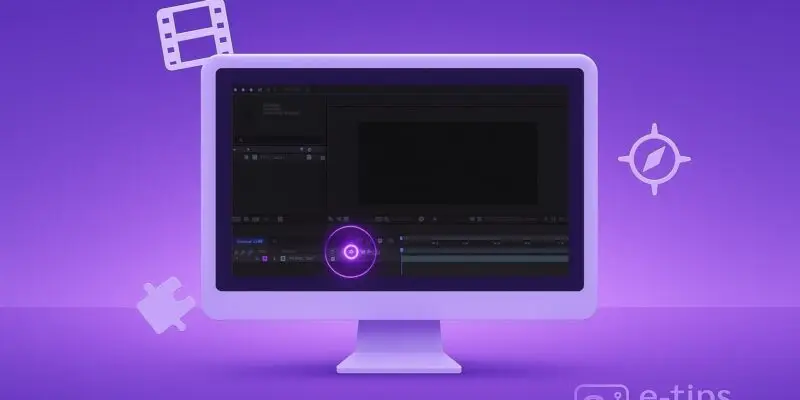Want to make your brand stand out with a professional animated logo? After Effects is the go-to tool for creating slick motion graphics that give your logo energy and personality. Whether it’s for YouTube intros, presentations, or brand stings, a well-animated logo adds polish to your content.
By the end, you’ll be confident animating logos from scratch using core After Effects tools — and even enhancing them with pro tricks.
Step-by-Step Guide
- Prepare Your Logo File
- Use a high-resolution PNG, SVG, or AI (Adobe Illustrator) file with transparency.
- Make sure layers are separated in Illustrator if you want to animate parts individually.
- Open After Effects and Create a New Project
- Go to File > New > New Project.
- Save your project to avoid data loss later.
- Import Your Logo
- Click File > Import > File or drag your logo into the Project panel.
- If it’s an Illustrator file, choose Import As: Composition – Retain Layer Sizes to keep each part separate.
- Create a New Composition
- Go to Composition > New Composition.
- Set dimensions (1920×1080 is standard), frame rate (30 fps), and duration (5–10 seconds is good for logos).
- Drag Your Logo Into the Timeline
- If using a layered AI file, open the imported composition and drag it to your new comp.
- Arrange and scale the layers using the Selection Tool (V).
- Animate Position, Scale, or Rotation
- Select a layer, hit P (Position), S (Scale), or R (Rotation) to reveal properties.
- Click the stopwatch to set keyframes, move the playhead, then adjust values to animate.
- Example: Animate the scale from 0% to 100% for a “pop-in” effect.
- Add Easy Ease for Smoother Motion
- Select your keyframes, right-click, then choose Keyframe Assistant > Easy Ease or press F9.
- Open the Graph Editor for finer control of speed curves.
- Add Effects or Masks
- Use Effects & Presets panel to add glows, blurs, or color changes.
- Add masks (with the Pen Tool) to reveal your logo in creative ways.
- Add Motion Blur
- Enable Motion Blur for your layers and in the timeline controls.
- Makes movement feel more natural.
- Preview and Adjust Timing
- Press Spacebar to preview.
- Tweak keyframe timing or layer in/out points for best pacing.
- Export Your Logo Animation
- Go to File > Export > Add to Render Queue or Composition > Add to Adobe Media Encoder.
- Choose QuickTime (with RGB + Alpha) for transparent background or H.264 for web.
Pro Tips & Workflow Improvements
- Use Pre-comps: Wrap grouped elements into pre-compositions for cleaner timelines and reusability.
- Use Null Objects: Animate multiple layers together by parenting them to a null layer.
- Use Trim Paths (for vector logos): Animate strokes dynamically on Illustrator-based logos.
- Add a Sound Effect: Subtle whooshes or impacts enhance the motion.
- Save as a Template: Keep a reusable comp structure to animate future logos fast.
Advanced Use Case: Looping the Animation
To make your logo loop seamlessly:
- Duplicate the animation in reverse using Time-Reverse Keyframes.
- Or use Time Remapping with expressions:jsxCopyEdit
loopOut("cycle")
Troubleshooting & Common Mistakes
- Logo is blurry: Enable Continuously Rasterize (sun icon) for vector layers.
- Effects not showing: Make sure the layer is selected and timeline indicators are within keyframe range.
- Missing transparency on export: Use a codec that supports alpha channels like QuickTime Animation or ProRes 4444.
- Choppy animation: Add more frames or use motion blur and easy ease.
- Import error from Illustrator: Ensure it’s in RGB mode and layers are unlocked.
Conclusion
Now you know how to turn a static logo into a professional animation using After Effects. You’ve learned everything from basic keyframe animation to applying effects and preparing exports for transparent or full-background usage.
Practice on different logos to build confidence — and next, try integrating sound, shape layers, or 3D camera moves for even more polish!

